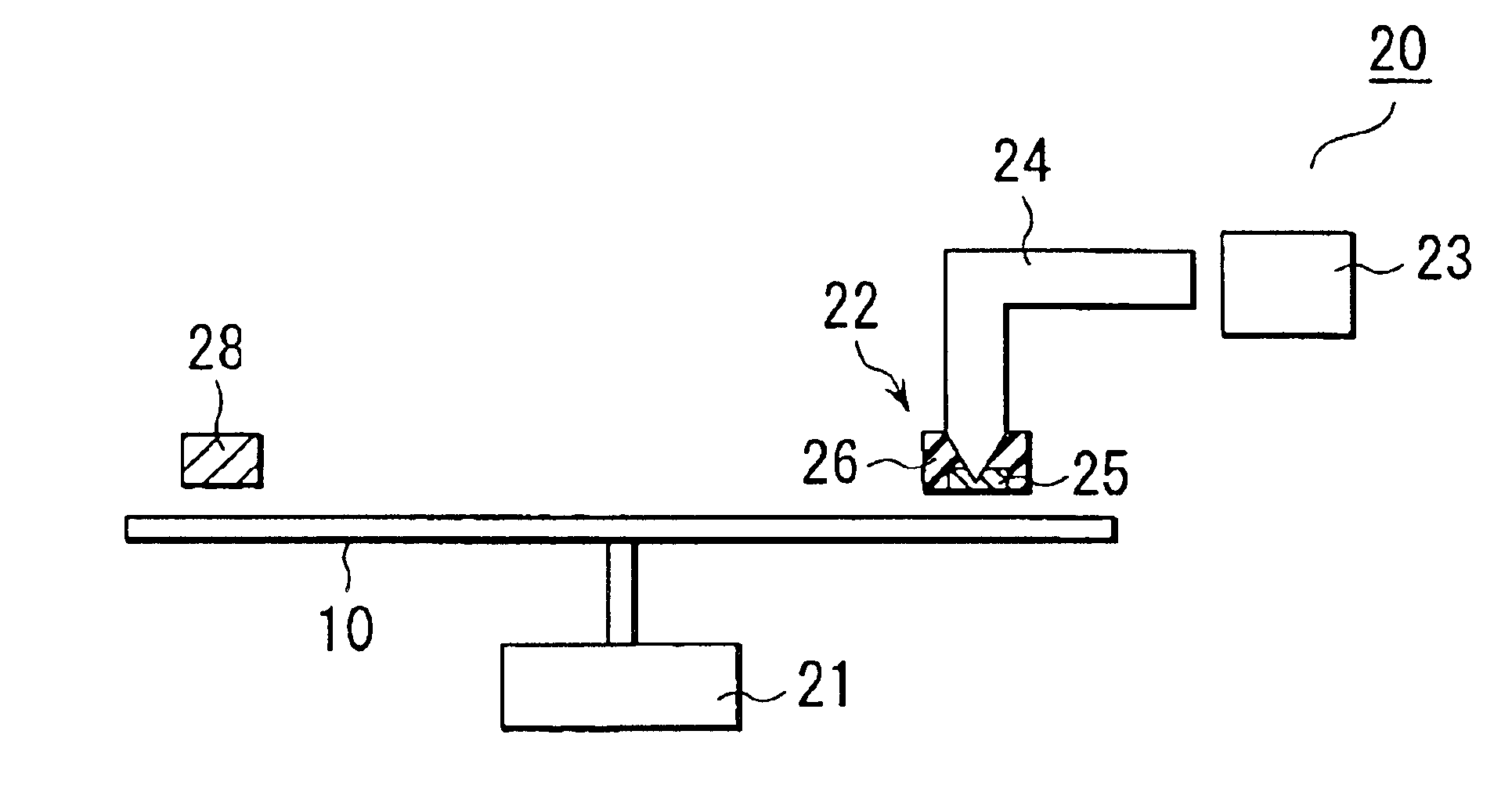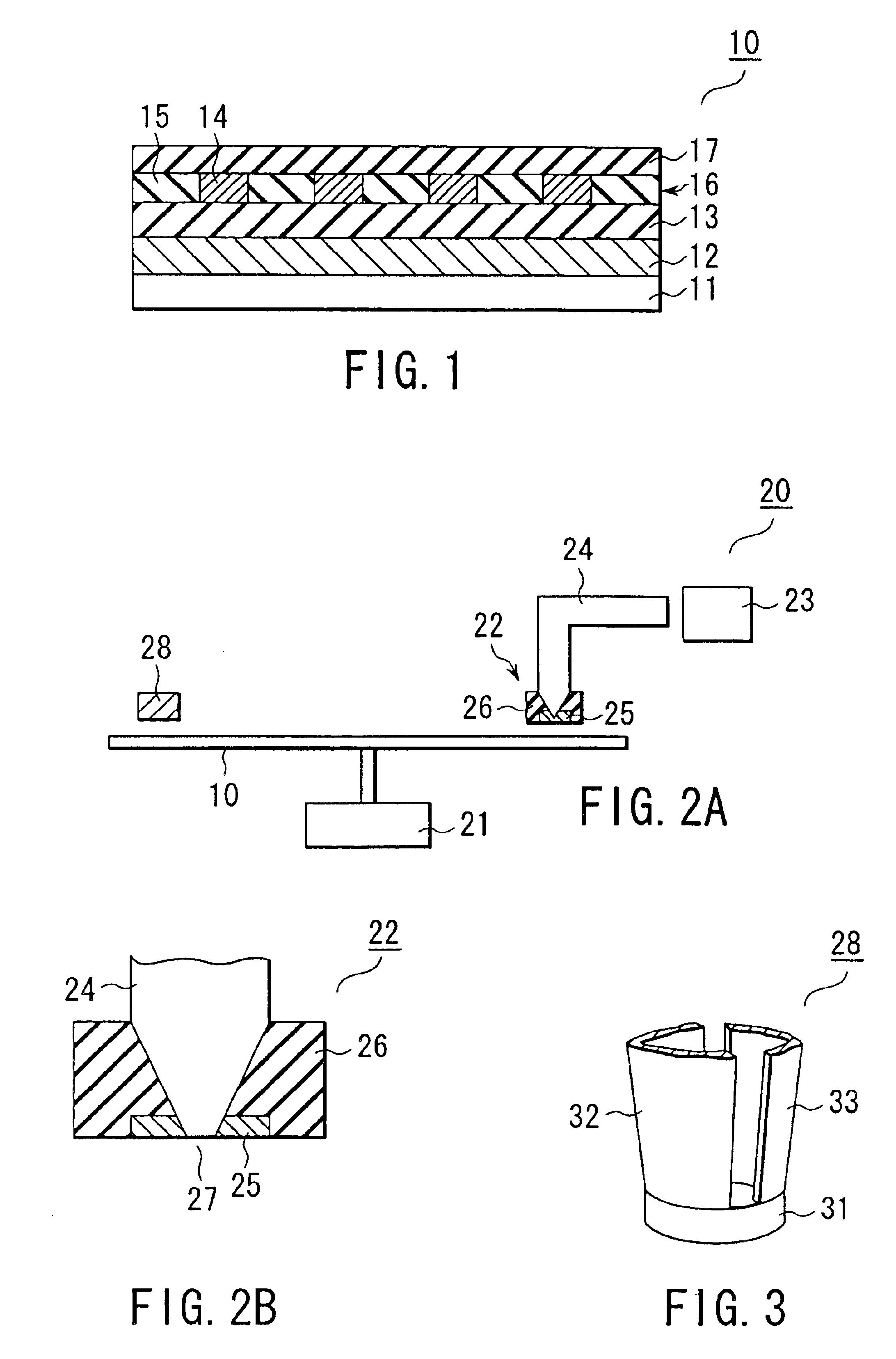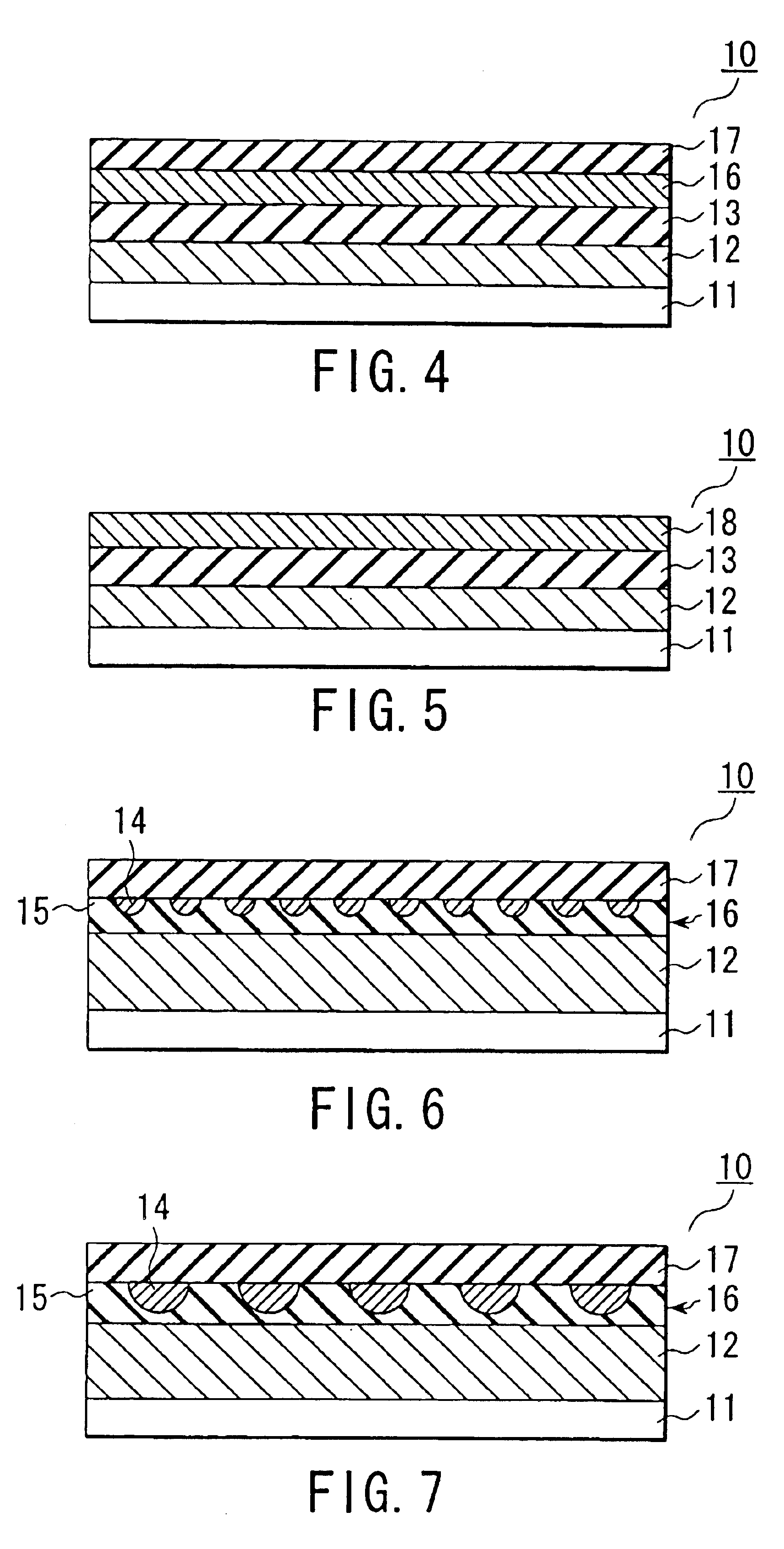Recording medium, recording apparatus and recording method
a recording apparatus and recording medium technology, applied in mechanical recording, nanoinformatics, instruments, etc., can solve the problems of inability to realize a recording density on inability to realize a recording density of the order of terabits/cm, etc., to achieve a higher recording density and increase the effect of conductivity
- Summary
- Abstract
- Description
- Claims
- Application Information
AI Technical Summary
Benefits of technology
Problems solved by technology
Method used
Image
Examples
second embodiment
the present invention will now be described.
FIG. 4 is a cross sectional view schematically showing a recording medium 10 according to a second embodiment of the present invention. The recording medium 10 shown in FIG. 4 has a structure that a conductive layer 12, an insulating layer 13, a recording layer 16, and a photoconductive layer 17 are stacked on a substrate 11 in the order mentioned. In the recording medium 10 of the particular construction, the recording layer 16 is constructed such that a large number of fine charge accumulating regions (not shown) are uniformly dispersed in an electrically insulating region (not shown). Naturally, the adjacent charge accumulating regions are electrically insulated from each other by the electrically insulating region. In other words, the second embodiment differs from the first embodiment in the construction of the recording layer 16. Also, a plurality of charge accumulating regions correspond to one bit in the second embodiment.
The recor...
third embodiment
the present will now be described.
Specifically, FIG. 5 is a cross sectional view schematically showing the construction of a recording medium 10 according to the third embodiment of the present invention. As shown in the drawing, the recording medium 10 in this embodiment has a structure that a conductive layer 12, an insulating layer 13, and a photoconductive recording layer 18 are stacked on a substrate 11 in the order mentioned. The third embodiment differs from the first and second embodiments in that the photoconductive recording layer 18 is used in the third embodiment in place of the laminate structure of the recording layer 16 and the photoconductive layer 17. In the photoconductive recording layer 18, photoconductive regions (not shown) and charge accumulating regions (not shown) are dispersed in an electrically insulating region (not shown). Also, in the third embodiment, a plurality of charge accumulating regions correspond to one bit.
The recording medium 10 shown in FIG....
fourth embodiment
the present invention will now be described.
Specifically, FIG. 6 is a cross sectional view schematically showing the construction of a recording medium 10 according to the fourth embodiment of the present invention. The recording medium 10 shown in FIG. 6 has a structure that a conductive layer 12, a recording layer 16, and a photoconductive layer 17 are stacked on a substrate 11 in the order mentioned. The fourth embodiment differs from the first embodiment in that the insulating layer 13 is not formed in the fourth embodiment. Also, the recording layer 16 is constituted by an electrically insulating region (insulating layer) 15 having a plurality of pits formed on the surface and a plurality of electrically insulating regions 14 filling these pits. Also, in this embodiment, each of the plural charge accumulating regions 14 corresponds to one bit.
The recording medium 10 shown in FIG. 6 can be manufactured, for example, as follows.
In the first step, a glass disc having an optical fi...
PUM
| Property | Measurement | Unit |
|---|---|---|
| diameter | aaaaa | aaaaa |
| diameter | aaaaa | aaaaa |
| thickness | aaaaa | aaaaa |
Abstract
Description
Claims
Application Information
 Login to View More
Login to View More - R&D
- Intellectual Property
- Life Sciences
- Materials
- Tech Scout
- Unparalleled Data Quality
- Higher Quality Content
- 60% Fewer Hallucinations
Browse by: Latest US Patents, China's latest patents, Technical Efficacy Thesaurus, Application Domain, Technology Topic, Popular Technical Reports.
© 2025 PatSnap. All rights reserved.Legal|Privacy policy|Modern Slavery Act Transparency Statement|Sitemap|About US| Contact US: help@patsnap.com



